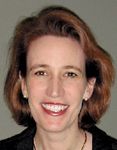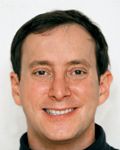- General Dermatology
- Eczema
- Chronic Hand Eczema
- Alopecia
- Aesthetics
- Vitiligo
- COVID-19
- Actinic Keratosis
- Precision Medicine and Biologics
- Rare Disease
- Wound Care
- Rosacea
- Psoriasis
- Psoriatic Arthritis
- Atopic Dermatitis
- Melasma
- NP and PA
- Skin Cancer
- Hidradenitis Suppurativa
- Drug Watch
- Pigmentary Disorders
- Acne
- Pediatric Dermatology
- Practice Management
- Prurigo Nodularis
Article
Dermatologists struggle to meet patient demand
National report - With demand for dermatologists' services outstripping supply in many areas of the country, sources say universities and other healthcare organizations are adding residency slots and pursuing innovative ideas to address patient access problems.
Editor's note: In this issue, Dermatology Times explores supply and demand,including: A shortage of dermatologists in some geographical areas, coupled with aggressive courting of qualified practitioners; efforts under way to expand the workforce; "teledermatology" as an option for overburdened doctors; and concerns in academia and editorial, where increasing workloads and less-thancommensurate pay are attracting fewer qualified instructors -which could impact the education of future dermatologists.

Meanwhile, prospective employers are growing increasingly aggressive.

A case in point: A two-year recruiting campaign at Massachusetts General Hospital, where his practice is based, has produced four new staff dermatologists scheduled to start work there this month, he says.
"We probably have room for one or two more," Dr. Kvedar says.

"In the middle of my second year, I began receiving one to three job offers a day," most from multi-specialty groups, says Priya Sambandan, M.D., a dermatology resident at the University of Vermont.
Large dermatology practices represent the second-largest source of offers, while she's occasionally been approached by HMOs and solo practitioners, she adds.

According to the American Academy of Dermatology's 2005 practice profile survey, results of which were being tabulated at press time, the vast majority of job offers come from community dermatologists, friends and faculty contacts, says Alexa Boer Kimball, M.D., M.P.H., assistant professor of dermatology at Harvard Medical School.

"We have clearly seen substantial increases in nonphysician clinicians who have entered dermatology during that time frame," she says.
However, she says the workforce growth "has not yet had a major impact (in meeting) demand, at least in the ways we're measuring it."





